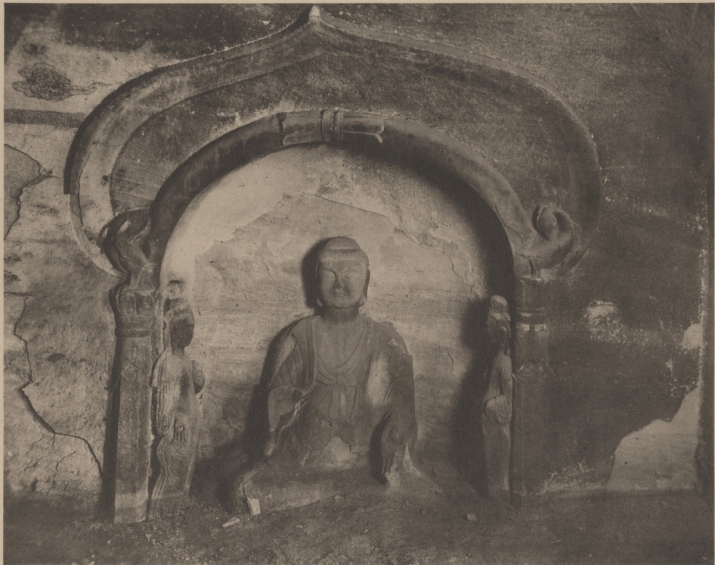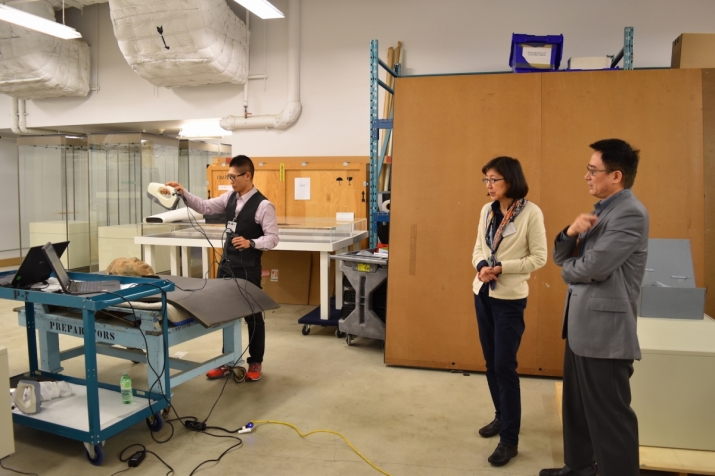NEWS
University of Chicago Digitally Restoring China’s Tianlongshan Caves With 3D Scanners
 Cave interior before destruction. From 3dprint.com
Cave interior before destruction. From 3dprint.comAs part of a remarkable project launched in 2013, the Center for the Art of East Asia (CAEA) in the Department of Art History at the University of Chicago is digitally restoring art from China’s Tianlongshan caves with 3D scanners. Since the project's inception, the center has digitized a number of sculptures from the caves that have been gathered from displays and exhibits around the world. To preserve the historical, spatial, and religious contexts of the caves, the CAEA began the process of digitally scanning and imaging the caves and their sculptures in 2014.
According to the Tianlongshan Caves Projects website: “As of May 2016 the project team has scanned and created high-resolution 3D models from approximately 100 sculpture fragments located in over 20 museums and collections around the world. We plan to conduct scanning of the cave interiors in the summer of 2016, working with Chinese project collaborators.” In addition to the digital models, visitors can see on the CAEA website photographs of cave art dating to the 1920s, alongside contemporary photographs of the sites. The project aims to record and archive the sculptures while compiling data about their places of origin in order to foster better understanding of Tianlongshan’s cave art.
Located 36km southwest of the city of Taiyuan in central Shanxi Province, the caves of the Tianlongshan mountain range (also known as the Mountain of the Heavenly Dragon), form a famous Buddhist grotto complex that was active from the Eastern Wei (534–50) and the Northern Qi (550–77) dynasties through to the Tang era (618–907). The complex spans two mountains, with eight caves on the eastern mountain and 13 caves on the western mountain. These caves contain Buddhist art of historical importance, from sculptures and carvings of the Buddha, bodhisattvas, and other divinities.
The caves received international attention after the First World War, but this newfound celebrity had devastating consequences for the artifacts in the caves. According to the CAEA website: “In the 1920s, the caves received international attention when they were first published with photographs showing their fine sculptural groups. Scholars, collectors, art dealers, and museum curators recognized their value as works of art, and soon the sculpted images cut from the walls of the caves made their way into the international art market—at first the heads, then figures of Buddhas and bodhisattvas, hands, and relief carvings in a second wave of destruction. Some of the figures that were missing their heads were fitted with newly made heads before being sold.” (tls.uchicago.edu)
 Researchers use an Artec Eva 3D scanner to scan a sculptural fragment at the Royal Ontario Museum. From 3dprint.com
Researchers use an Artec Eva 3D scanner to scan a sculptural fragment at the Royal Ontario Museum. From 3dprint.comThe website 3Dprint.com reported that the ongoing project utlizes Artec Group’s handheld Spider and Eva scanners to compile and scan the items—Eva for the larger statues and the higher-resolution Spider for smaller sculptures and fragments. The CAEA previously conducted a similar project in 2004 with the Xiangtangshan caves, a series of grottoes in Hebei Province, which were looted in the early 20th century. “This technology opens up new windows in being able to work with material like this,” said Katherine Tsiang, associate director of the CAEA, in a 2013 BBC interview about the Xiangtangshan project. “A lot of reconstruction of sites can be done. And in fact this technology can be used to print 3D models.” (BBC)
It is hoped that with their skilled team and advanced technology, the CAEA can create comprehensive digital reconstructions of art that was once thought lost forever.
See more
University of Chicago Digitally Restores Ancient Buddhist Caves with 3D Scanners (3DPrint.com)
Center for the Art of East Asia (The University of Chicago)
University of Chicago Beijing Center Gallery (Tianlongshan Caves Projects)
Tianlongshan Caves Projects (Center for the Art of East Asia)
Digital Chinese caves preserve history (BBC)
Xiangtangshan Caves Project (Center for the Art of East Asia)














